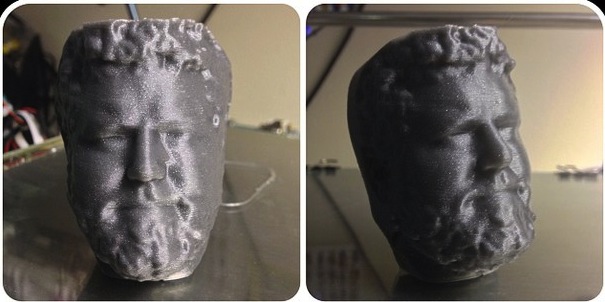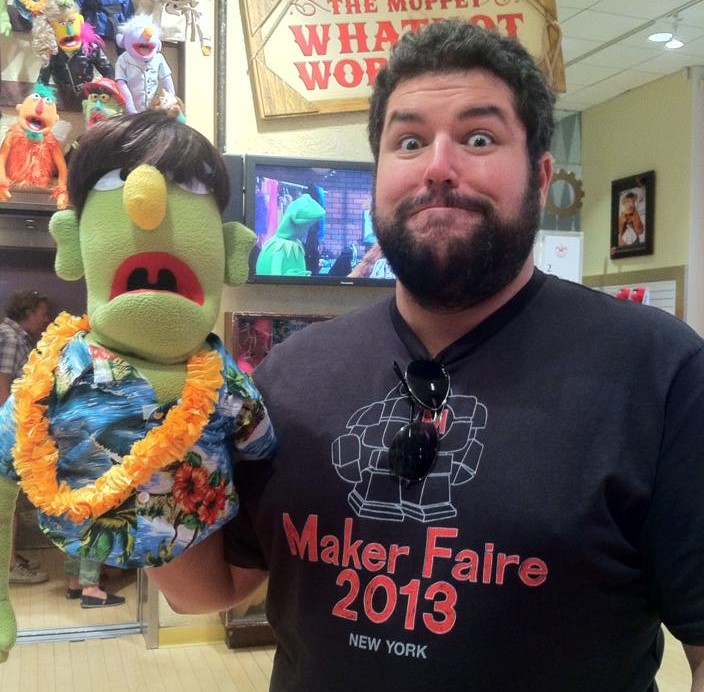After a year or so of tinkering with and learning about 3D printing, there are a few applications I have come across which stood out as being particularly unique or interesting. I have included a brief description of each below along with links where you can find more information if you are interested in trying them for yourself.
Getting a 3D printed selfie
There are a number of different techniques for getting 3D scans of yourself created, which can then be 3D printed. The two that I have experienced were at the MakerBot store in Manhattan and at the Zero Point 3D scanning booth at the 2012 Miami Mini Maker Faire. If you aren’t near a MakerBot store, or one of the events with a Zero Point 3D scanner, you can try creating your own models at home using a Microsoft Kinect and software like Reconstructme.
The in-store MakerBot scanner, which uses front-facing and side-facing cameras, only produces a scan of your face and doesn’t include the back of your head, but it is a quick process that creates a very good resolution scan as seen below.
The second method involved standing on a rotating platform, designed and operated by Zero Point 3D, and getting a whole body scan, color information included. Once scan data is acquired, Zero Point 3D processes the models, sends them out for printing and delivers a scale color model.

Create custom lithopanes
To quote Wikipedia, a Lithopane is:
an etched or molded artwork in thin very translucent porcelain that can only be seen clearly when back lit with a light source. It is a design or scene in intaglio that appears “en grisaille” (in gray) tones.
Basically, it’s a very neat and easy way to turn a two dimensional image into a three dimensional object that appears as the image does when held up to a light source as seen in the example below.
Here’s another (better) example, of a lithopane created from a picture of a robotic arm at work:


There are two easy ways to generate your own 3D printed lithopane design files. The first, and easiest, is to use the Thingiverse lithopane customizer. The customizer works well, but it limits you to creating a square fixed size lithopane. If you want to have more control over the lithopane design, you can use Processing to create lithopanes of any shape and size you like as described in the following Instructables post. There are a number of other great 3D printed lithopane examples on the RepRapPro blog.
Make your own custom chocolate molds
I haven’t tried this last one yet, but it’s pretty high up on the to-try list. This example comes courtesy of Embedded Junkie who created his own vacuum formed Darth Vader chocolate mold. You fan find a fully detailed photo essay describing the process here: http://imgur.com/a/hUE7w
Last but not least, honorable mention to other awesome things you can do with your 3D printer (again, I haven’t tried these yet, but they’re on the list…):
- Cast your own metal parts using the lost PLA method: http://makezine.com/projects/guide-to-3d-printing-2014/metal-casting-with-your-3d-printer/
- Change out your plastic extruder to print pancakes: http://www.pancakebot.com/


